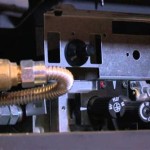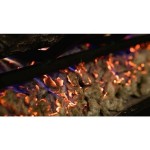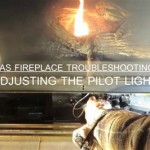Fireplace Protection Barriers: Ensuring Safety and Peace of Mind
Fireplaces offer warmth, ambiance, and a focal point for living spaces. However, they also present potential hazards, particularly for homes with young children, pets, and individuals with mobility limitations. Fireplace protection barriers are essential safety devices designed to mitigate these risks, preventing accidental burns, and maintaining a secure environment surrounding the fireplace.
These barriers come in a variety of designs, materials, and sizes to suit different fireplace configurations and aesthetic preferences. Understanding the types of barriers available, the factors to consider when selecting one, and the installation process can contribute significantly to a safer and more enjoyable fireplace experience.
Types of Fireplace Protection Barriers
The market offers several types of fireplace protection barriers, each with its own set of advantages and disadvantages. The choice depends on individual needs, the fireplace's design, and the level of protection required.
Metal Fireplace Screens: These are perhaps the most common and readily available type of barrier. Metal screens typically consist of a mesh panel framed by a metal structure. They prevent sparks and embers from escaping the fireplace and causing potential fires or burns. Metal screens are available in various styles, from simple, functional designs to more ornate versions that complement the room's décor.
The primary advantage of metal screens is their affordability and ease of installation. They are also relatively lightweight and can be easily moved for fireplace maintenance. However, metal can become extremely hot during fireplace operation, posing a burn risk if touched directly. Furthermore, basic metal screens may not provide adequate protection against contact with the hot glass of a modern gas fireplace.
Fireplace Gates/Enclosures: These provide a more robust level of protection, completely enclosing the fireplace opening. Fireplace gates are typically made of sturdy metal and feature a door or gate that allows access for tending to the fire. They are particularly well-suited for homes with young children or pets, as they prevent direct access to the fireplace area.
Fireplace enclosures offer superior protection but are generally more expensive and require more complex installation. They also tend to be visually more intrusive than simple screens. Careful measurement of the fireplace opening is crucial to ensure a proper fit. Some models are adjustable to accommodate different fireplace sizes.
Hearth Gates: These barriers are designed to create a protected zone around the entire hearth area, not just the fireplace opening itself. Hearth gates are often used in homes with large hearths or where children are likely to play near the fireplace. They typically consist of multiple panels that can be configured to fit the specific dimensions of the hearth.
Hearth gates provide comprehensive protection but can be more cumbersome to install and move. They also require considerable space around the fireplace. The panels are usually interconnected and anchored to the wall for stability.
Glass Fireplace Doors: While not solely designed as barriers, glass fireplace doors offer a degree of protection in addition to enhancing the fireplace's efficiency. These doors enclose the fireplace opening with heat-resistant glass, preventing drafts and reducing heat loss. They also help contain sparks and embers.
Glass fireplace doors can become extremely hot during use and should not be touched. Furthermore, they may not provide adequate protection against determined attempts to open them. Regular cleaning is necessary to maintain visibility through the glass.
Factors to Consider When Selecting a Fireplace Protection Barrier
Choosing the right fireplace protection barrier requires careful consideration of several factors to ensure both safety and aesthetic compatibility.
Size and Fit: Accurate measurement of the fireplace opening is paramount. The barrier must be wide enough to completely cover the opening and tall enough to prevent sparks from escaping over the top. For fireplace gates and enclosures, precise measurements are essential to ensure a secure fit and prevent gaps through which children or pets could potentially access the fireplace.
For hearth gates, measure the dimensions of the entire hearth area that needs to be enclosed. Adjustable models offer greater flexibility in accommodating different hearth sizes.
Material and Construction: The barrier's material should be durable and heat-resistant. Metal screens and gates are typically made of steel, iron, or aluminum. These materials can withstand the high temperatures generated by a fireplace. The construction should be sturdy and stable to prevent tipping or collapse.
Check the welding and joints for any signs of weakness or instability. Ensure that any finishes are non-toxic and resistant to chipping or rusting.
Safety Features: Look for barriers with safety features such as child-resistant latches, secure mounting hardware, and smooth edges to prevent injuries. Child-resistant latches are particularly important for fireplace gates and enclosures, preventing young children from opening the gate and accessing the fireplace.
Mounting hardware should be robust and designed to securely anchor the barrier to the wall or floor. Smooth edges and corners minimize the risk of cuts and scrapes.
Aesthetic Compatibility: The barrier should complement the style and décor of the room. Fireplace screens are available in a wide range of designs, from traditional to contemporary. Choose a style that blends seamlessly with the existing furnishings and architectural features.
Consider the finish and color of the barrier. Options include black, bronze, silver, and brass. Select a finish that coordinates with the fireplace surround and other metal accents in the room.
Ease of Use: The barrier should be easy to install and operate. Fireplace screens are generally easy to install and move. Fireplace gates and enclosures may require more complex installation but should be easy to open and close for adding wood or tending to the fire.
Consider the location and accessibility of the barrier when in use. Ensure that the barrier does not obstruct pathways or create tripping hazards.
Installation and Maintenance
Proper installation and regular maintenance are crucial for ensuring the effectiveness and longevity of fireplace protection barriers.
Installation Procedures: Follow the manufacturer's instructions carefully. For fireplace screens, simply position the screen in front of the fireplace opening, ensuring that it covers the entire area. For fireplace gates and enclosures, use the provided mounting hardware to securely attach the barrier to the wall or floor. Use a level to ensure proper alignment. For hearth gates, configure the panels to fit the hearth area and anchor them to the wall for stability.
If unsure about any aspect of the installation process, consult a professional installer. Improper installation can compromise the barrier's effectiveness and create safety hazards.
Maintenance Practices: Regularly inspect the barrier for any signs of damage or wear. Check for loose screws, broken welds, or damaged mesh. Repair or replace any damaged components immediately. Clean the barrier regularly to remove dust and soot. Use a mild detergent and water. Avoid using abrasive cleaners, which can damage the finish.
For glass fireplace doors, clean the glass regularly with a glass cleaner designed for high-temperature surfaces. This will maintain visibility and prevent the buildup of soot and grime.
Safety Precautions: Never leave a fireplace unattended, especially when children or pets are present. Teach children about the dangers of fire and the importance of staying away from the fireplace. Keep flammable materials away from the fireplace area. Install smoke detectors and carbon monoxide detectors to provide early warning of potential hazards.
Ensure that the fireplace is properly ventilated to prevent the buildup of carbon monoxide. Have the fireplace inspected and cleaned annually by a qualified professional.
By implementing these measures, individuals can create a safer and more enjoyable environment around their fireplace, minimizing the risk of accidents and maximizing peace of mind.

Barrier Screens Mean Safety As Fireplace Interest Heats Up Builder

Fireplace Child Pet Protection Firescreen Babyproof Co Za

Indoor Fireplace Screen With Doors Wrought Iron Gate Cover Metal Fence Safety Gates Hearth Pet Guard Freestanding Spark Protector Panels Com

Indoor Fireplace Screen With Doors Wrought Iron Gate Cover Metal Fence Safety Gates Hearth Pet Guard Freestanding Spark Protector Panels Com

Barrier Fireplaces Usa

How To Childproof Your Fireplace Baby Proof

Fireplace Safety Screens Vs Cool Glass Barriers

Fireplace Safety A Look At Ortal S Heat Barrier Solutions

How To Baby Proof Fireplace With A Safety Screen

Gas Fireplace Safety Screen Impressive Climate Control








